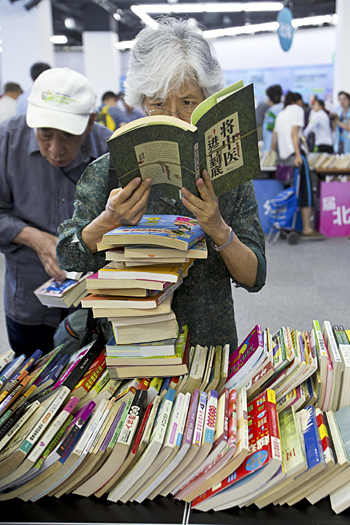|
 |
|
BOOK EXCHANGE: Readers attend the fourth Beijing Book Exchange Fair held at the Capital Library on May 23. More than 10,000 used books and magazines were available for trade (ZHAO BING) |
Smog Assessment
On May 27, the State Council, China's cabinet, issued regulations on assessing local governments' performance in their implementation of a nationwide action plan for air pollution control.
The Central Government is trying to tie local officials' career progressions with their work on air pollution control in a bid to provide them with more incentive to carry out this essential work.
Under the action plan, which was put into practice in September 2013, the Central Government aims to cut the density of inhalable particulate matter by at least 10 percent in major cities nationwide by 2017.
PM 2.5, a key indicator of air pollution, should fall by about 25 percent from 2012 levels in Beijing and its surrounding provincial areas by 2017, while the Yangtze River Delta and the Pearl River Delta regions are expected to see reductions of 20 percent and 15 percent, respectively.
Provincial governments will be assessed annually in terms of their implementation of the plan by 2017.
Returning Students
More than 1.4 million Chinese overseas students returned to China after graduating over the past 35 years, according to statistics released by the Ministry of Education (MOE) on May 27.
The MOE cited figures that over 3.05 million people pursued degrees in foreign countries from 1978, the beginning of China's opening-up policy, till the end of 2013.
Among the more than 1.65 million people who have not returned, 1.07 million are still studying or doing research abroad.
Along with its rising strength and economic development, China's demand for skilled and talented minds is also on the rise, according to a statement issued by the MOE. It estimated that the number of students studying abroad and graduates returning to China will continue to grow rapidly.
Community Correction
China's community correction centers had received more than 1.84 million offenders nationwide by the end of February since trials were launched 11 years ago, official data showed.
Among the offenders, around 60 percent have already been released, according to a joint statement issued by the Supreme People's Court, the Supreme People's Procuratorate, as well as ministries of public security and justice at a conference on March 27.
China first launched trials for community correction centers in 2003 in six cities and provinces, including Beijing and Shanghai, and has extended the scheme to other parts of the country since.
The correctional program has been imposed on offenders under surveillance, on probation, parole, and those temporarily out of prison. Social workers and volunteers are often invited to assist.
| 